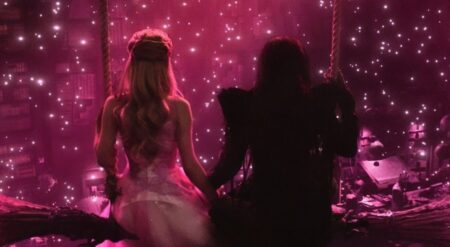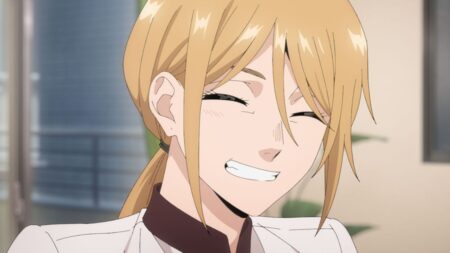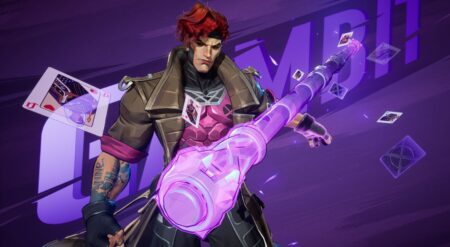
The legend of King Arthur has been adapted and has inspired several film and television series over the years, but none have had as much of an impact as Excalibur. Forty years after its debut, it remains the pinnacle of Arthurian adaptations due to the approach director/co-writer John Boorman took to the material, its unique visual style, and how it established several Irish and British actors’ careers. It has also served as an influence on other filmmakers and even inspired other adaptations of Arthurian legend.
Boorman wanted to adapt the legend of Arthur for years, using Thomas Mallory’s Le Morte d’Arthur as inspiration. However, when Boorman and co-writer Rospo Pallenberg presented the original script for Excalibur to United Artists, the film studio deemed it too costly as the script ran over three hours. Boorman then tried his hand at an adaptation of J.R.R. Tolkien’s The Lord of the Rings until Orion Pictures forked over the cash to let him film Excalibur. Ironically, the set designs and costumes used in Excalibur drew from Boorman’s intended vision for Lord of the Rings. Tolkien himself was no stranger to Arthurian lore. Having translated Sir Gawain and the Green Knight into English, the poem would later serve as inspiration for David Lowery’s The Green Knight.
What stands out most about Excalibur is its visual style, as Boorman and cinematographer Alex Thomson craft a Britain that feels otherworldly and even alive at times. An everpresent green glow permeates the film, especially at night and when Merlin (Nicol Williamson) calls on his magic. When Merlin summons the power of a mythical “Dragon” that is said to represent the land of England, a thick fog rolls over the land, giving the effect that knights on horseback are literally floating through the sky. And Thomson’s use of lighting gives the armor that Arthur (Nigel Terry) and his Knights of the Round Table wear a shimmering effect as if the armor itself was crafted from pure light. With Richard Wagner’s thunderous opera playing throughout the film’s runtime, it truly does feel like the epic fantasy that one would expect when the words “King Arthur” come to mind.

The fantasy also turns rather dark when it comes to the battle sequences. Boorman didn’t shy away from the blood and gore that occurred in medieval warfare, taking a realistic approach to men in heavy armor wielding heavy weapons. The clash of blades against armor plates creates a near-deafening cacophony of noise, and warriors suffer deadly injuries—impaled by enemy swords and even having whole limbs hacked off. One of the most macabre images features a raven pecking at the corpse of a knight, pulling out one of its eyeballs.
Years before Game of Thrones took pop culture by storm, Excalibur threw sex into the world of swords and sorcery. The consequences of lust drive the film’s story, especially the love affair between Sir Lancelot and Arthur’s wife Guinevere, which eventually leads to the land of Britain—and Arthur, who is tied to said land—becoming a withered and hollow shell of itself.
The film also combined multiple elements of Arthurian lore, a practice that most adaptations use to this day. For example, Guinevere and Lancelot’s affair borrows elements from the tale of Tristan and Isolde, another doomed medieval romance. Perceval, the knight who finds the Holy Grail, is the one who gives Excalibur back to the Lady of the Lake instead of Bedivere in the film. However, the biggest changes were to make Excalibur and the sword a younger Arthur found in the stone the same and combine Arthur’s sister Morgause and the sorceress Morgan le Fay into Morgana le Fay. Even Arthur himself took on elements of the mythical figure known as the Fisher King, with his health being tied to Britain’s faith and his salvation in the hands of Perceval. Other television series, including the BBC’s Merlin and The Kid Who Would Be King, utilize these elements, most notably having Excalibur thrust into a stone and Morgana serving as a major foe for Arthur.

Boorman populated Excalibur‘s cast with many Irish and British actors as filming took place primarily in Ireland, with many of those actors gaining prestige later on in their careers. For example, Patrick Stewart was cast as Guinevere’s father, Leodegrance, the actor who would later become a pop culture icon thanks to Star Trek: The Next Generation and his role in the X-Men film franchise. Stewart would even return to Arthurian legend with The Kid Who Would Be King, playing an aged version of Merlin. Morgana was portrayed by Helen Mirren, who recently joined the Fast and the Furious franchise. Ironically, Mirren and Nicol Williamson had a difficult time on a production of Hamlet, which Boorman used to fuel the enmity between Morgana and Merlin. Even Liam Neeson appeared as Sir Gawain, years before he underwent a career renaissance with Taken. Additionally, Dev Patel would later take up the role of Gawain in The Green Knight.
To this day, Excalibur serves as an inspiration to multiple filmmakers. Guillermo del Toro used the film as visual inspiration for Trollhunters, specifically with Jim Lake’s glowing blue-and-silver Trollhunter armor and Merlin’s visual appearance, which pays homage to Williamson’s take on the wizard. In addition, Zack Snyder has called Excalibur his favorite film of all time, referencing it in Army of the Dead with the “Gotterdammerung” vault and casting Cirian Hinds, who played Sir Lot, as Steppenwolf in his Justice League film.
Four decades after its debut, Excalibur not only serves as the definitive version of King Arthur’s legend, it has also inspired other projects and filmmakers to boot. With Snyder looking to craft his own version of Arthur’s legend set in the Wild West, and The Green Knight leaning into the same sense of surrealism and dark fantasy, Boorman’s influence on the fantasy film genre is undeniable.







